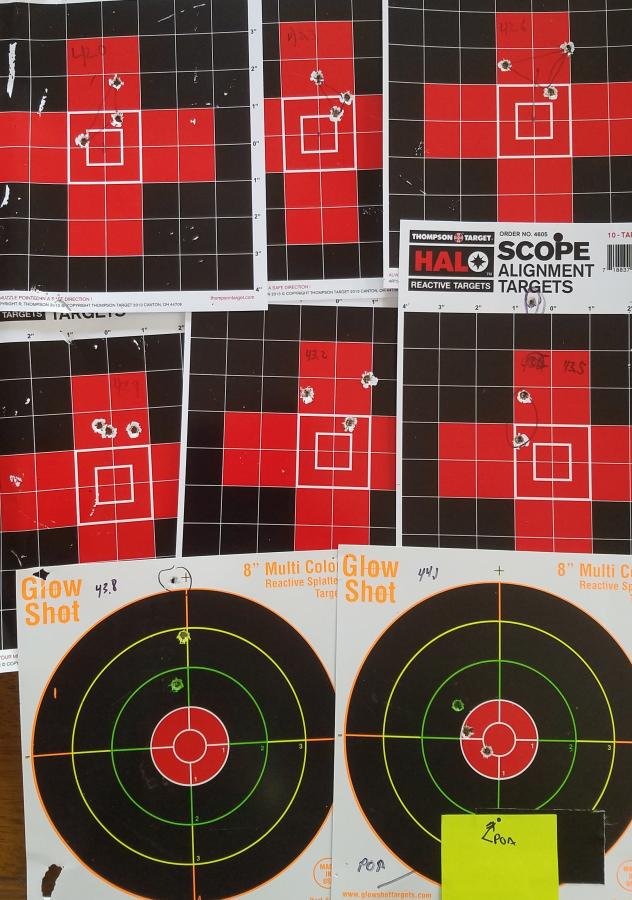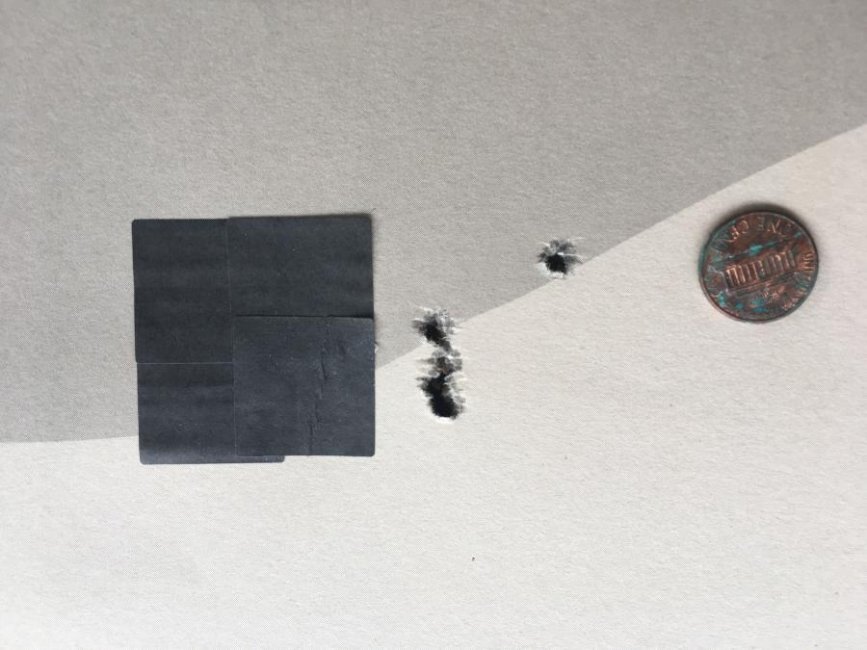E.Shell
Ultimate Member
I think your loads are fine so far and you have some room to experiment with a few more powder increments.Need quick opinion on determining upper pressure limit. From what I've read one sign of overpressure is flattened primers. When I examined my fired cases at the highest charge I see only a slight flattening. I'm thinking ok I've got room to go up. Good. Then I compared my fired reloads to an unfired factory round and a fired factory round and I was surprised that all of the factory rounds look totally flattened and expanded into the chamfer of the primer pocket.
[ snip ]//uploads.tapatalk-cdn.com/20170315/d94cb720ef55266aa09f83f401f48c63.jpg[/IMG]
From left to right:
1) Unfired factory round
2) Fired reload at my lowest test charge
3) Fired reload at my highest charge
4) Fired factory round
So this has me wondering two things obviously 10 factory rounds cannot be near the pressure max. Is using primer flattening even reliable? Second thing is that my hand loads were only neck sized so they were snug in the breech. Is it possible that being snug the primers just done push out like they may in a factory round which has a bit more play?
Two things will flatten primers:
One is excessive headspace, which will cause primers to take on a flattened appearance. The case is driven forward in the chamber by the firing pin until it hits the chamber shoulder, then the primer initiates. When the primer fires, pressure within the primer pocket backs it out of the case a distance equal to headspace. As the powder ignites and builds to working pressure, the primer begins to expand and 'balloon out' where unsupported by the primer pocket, but then the case head is driven back down against the bolt face, causing the expanded primer to flatten out and occupy the radius relief area at the outer edge of the primer pocket. This can look like high pressure, but really isn't. One clue is that if pressure were really this high, the primer indent is usually cratered too, but in the case of excessive headspace, it will be smooth and round.
The other thing that will flatten primers is high pressure, where the limit of elasticity of the primer cup material is exceeded and the cup deforms to fit all available expansion space. Pressure flattening will run from "mild", where the radius edges of the primer start to square up, to "moderate", where most free space is occupied and the radius edges are pretty much square to "severe", where the tool marks on the bolt face are impressed into the primer cup material and the cut begins to "crater" (extrude) back into the firing pin bore.
Cratering begins with lightly raised edges and becomes more apparent and sharper, until the yield strength of the cup is reached and "blanking" occurs, in which the small round firing pin indent is blown back into the firing pin bore and into the bolt body, leave a perforated primer cup.
I'd characterize your fired factory load primer as between moderate and severe, favoring moderate, as evidenced by the radius edges of the primer almost filling the crevice and the moderate cratering, but no impressions from the bolt face.
Yes, factory ammo is usually loaded on the hot side. As I had mentioned above, most consistent performance often comes at just below maximum, and another compelling reason is that the marketing department sets the bullsh!t bar pretty high and if they expect it to deliver what they say it will, it has to be loaded to maximum.
Accuracy with factory ammo is typically evaluated at 100 yards, and this is also where about 90% of it is fired. As long as we deliver velocities similar to what is marketed and groups are decent at 100 yards, most shooters are happy and done.
Federal is one ammo maker that seems to have broken the code, and it is pretty clear that they use the OCW method in loading their .223 and .308 match ammo. Federal Gold Medal .308s in 168 are typically so precise at 100 yards in so many rifles, if your rifle won't shoot them, there is probably something wrong with the rifle.












